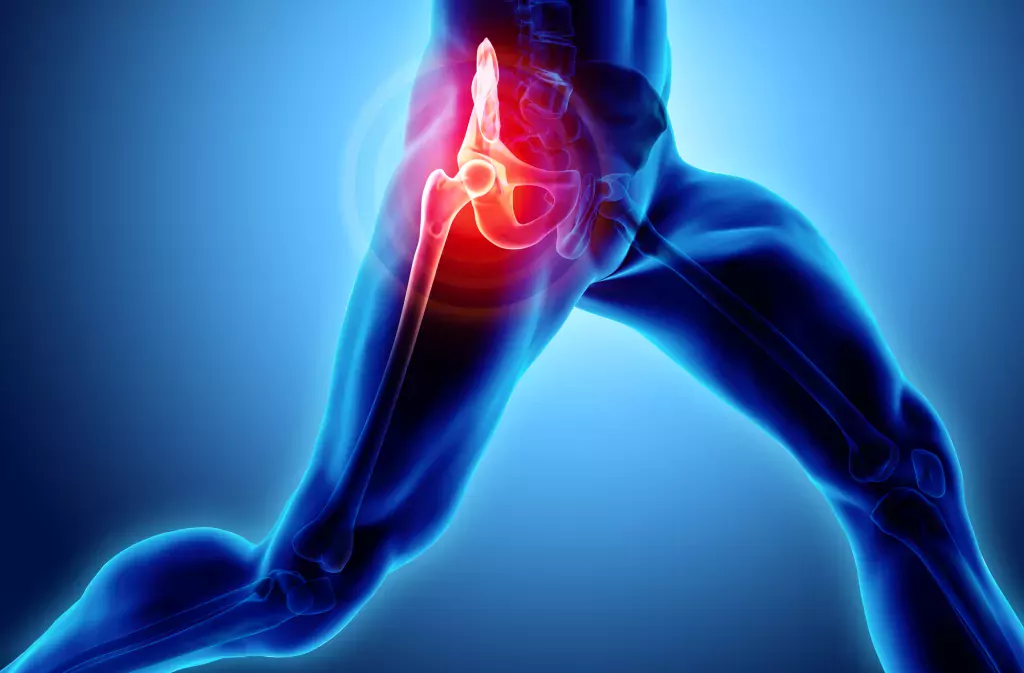Best Hip Pain Treatment In Nagpur

Best Hip Pain Treatment In Nagpur
Signs and Symptoms of Hip Pain
Hip pain can vary in intensity and may be felt in different areas of the hip or thigh. Common symptoms include:
- Pain or stiffness in the hip joint
- Limited range of motion and difficulty moving the hip
- Pain that worsens with certain activities, like walking, climbing stairs, or sitting for long periods
- Swelling or inflammation around the hip joint
- Pain radiating to the lower back or groin area
What Are the Best Hip Pain Treatment Options?
The best approach to hip pain treatment depends on the cause and severity of the pain. Treatment options can range from non-invasive therapies to surgical solutions. Let’s explore some of the most effective treatments for hip pain relief:
1. Physical Therapy
One of the most effective and non-invasive treatments for hip pain is physical therapy. A trained physical therapist can design a personalized rehabilitation program aimed at:
- Strengthening the muscles around the hip joint to support better function
- Improving flexibility and range of motion
- Reducing strain on the hip joint
- Alleviating pressure and discomfort during movement
Physical therapy can be highly effective for treating conditions like arthritis, tendinitis, and muscle strains.
2. Medication for Hip Pain Relief
Over-the-counter pain medications such as non-steroidal anti-inflammatory drugs (NSAIDs) (e.g., ibuprofen, naproxen) can help reduce inflammation and provide temporary relief from hip pain. In more severe cases, your doctor may prescribe stronger medications, including corticosteroid injections, which help reduce inflammation directly at the source of the pain.
3. Platelet-Rich Plasma (PRP) Therapy
PRP therapy is a cutting-edge treatment that uses your body’s own healing properties to promote tissue repair. In this procedure, a sample of your blood is processed to concentrate platelets and growth factors, which are then injected into the affected hip joint. PRP therapy can accelerate healing in cases of tendonitis, arthritis, and ligament damage, reducing pain and inflammation.
4. Stem Cell Therapy
Stem cell therapy is another promising non-surgical treatment for hip pain. Stem cells, typically taken from your own body, can help regenerate damaged tissues in the hip joint, including cartilage and tendons. This therapy is commonly used for conditions like osteoarthritis or cartilage wear, as it can slow down the progression of joint degeneration and alleviate pain.
5. Corticosteroid Injections
For immediate pain relief, corticosteroid injections directly into the hip joint can reduce inflammation and provide quick pain management. This option is particularly useful for people suffering from arthritis or inflammation-related conditions. However, while effective, these injections are typically used as a temporary solution, and repeated use may lead to potential side effects.
6. Surgical Options for Hip Pain Treatment
If non-invasive treatments fail to provide relief, surgery may be necessary, especially in cases of severe hip joint damage or advanced arthritis. Some of the most common surgical treatments for hip pain include:
- Hip Arthroscopy: A minimally invasive procedure used to treat hip joint problems such as labral tears, cartilage damage, or impingements. The surgeon makes small incisions and uses a camera and specialized instruments to repair the damaged area.
- Hip Replacement Surgery: In cases of severe arthritis or joint degeneration, a total hip replacement may be the best option. During this procedure, the damaged hip joint is replaced with a prosthetic implant, relieving pain and improving mobility.
- Hip Resurfacing: A less invasive alternative to total hip replacement, hip resurfacing involves capping the damaged parts of the femur and acetabulum with metal caps. This option is typically suitable for younger, more active patients.
7. Heat and Cold Therapy
Both heat and cold therapies are simple yet effective for managing hip pain. Cold therapy helps reduce inflammation and numb the area, while heat therapy can relax tight muscles and improve blood circulation to the affected area. Using these treatments in combination with other therapies can provide significant pain relief.
8. Lifestyle Changes and Weight Management
For those with hip pain caused by obesity or joint stress, adopting a healthy lifestyle can make a substantial difference. Weight management and maintaining a healthy BMI can reduce the pressure on the hip joints, particularly for those with osteoarthritis. Low-impact exercises like swimming, cycling, and walking are also beneficial for strengthening the muscles around the hips and improving joint function.
9. Alternative Therapies
Some patients find relief from hip pain through alternative therapies like acupuncture, chiropractic care, or massage therapy. These therapies focus on reducing pain, improving joint mobility, and promoting overall wellness, complementing other treatments for a more holistic approach to healing.
When Should You Seek Medical Advice for Hip Pain?
If your hip pain is severe, persistent, or worsens over time, it’s important to consult a healthcare professional. Early intervention can help prevent further damage and provide faster, more effective relief. An orthopedic specialist will assess your condition, determine the cause of the pain, and recommend the best hip pain treatment tailored to your needs.
